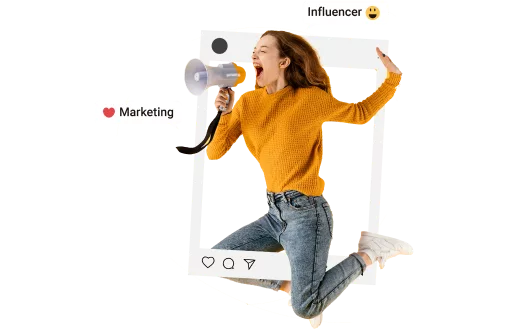In the age of social media, influencer marketing has evolved from a trendy buzzword to an essential part of modern brand strategy. Businesses across industries—from fashion and beauty to tech and wellness—are leveraging the power of influencer partnerships to reach niche audiences, build trust, and drive conversions. But what sets the best influencer partnerships apart from the rest?
In this post, we’ll explore some of the most impactful influencer-brand collaborations in recent years and break down what made them successful. Whether you’re a brand looking to collaborate or an influencer seeking authentic partnerships, these examples offer valuable lessons.
1. Nike and Colin Kaepernick: Purpose Over Product
Nike’s partnership with Colin Kaepernick is one of the boldest influencer campaigns in recent history. Rather than focus on product features, the brand chose to take a stand on social justice by supporting Kaepernick, the NFL player known for kneeling during the national anthem in protest of racial injustice.
Why It Worked:
- Authenticity: Kaepernick’s activism aligned with Nike’s “Just Do It” spirit.
- Emotional Connection: The campaign resonated emotionally, sparking worldwide conversations.
- Brand Loyalty: Though controversial, it solidified Nike’s values and strengthened customer loyalty among its core audience.
2. Daniel Wellington and Micro-Influencers: Consistency at Scale
Watch brand Daniel Wellington took a different route—partnering with thousands of micro-influencers across Instagram. Instead of spending millions on celebrity endorsements, they gifted products to smaller influencers who aligned with their aesthetic and asked them to post photos with specific hashtags and discount codes.
Why It Worked:
- Scalable Reach: A massive number of micro-influencers allowed for consistent brand visibility.
- Cost-Effective: Gifting watches and offering commission-based partnerships helped manage budgets.
- Relatability: Micro-influencers have tighter-knit communities and high engagement.
3. Fenty Beauty and Inclusive Influencers: Representation Matters
Rihanna’s beauty brand, Fenty Beauty, launched with the mission of inclusivity—offering 40+ foundation shades to match every skin tone. The brand partnered with influencers of all races, genders, and body types, showcasing real people using their products.
Why It Worked:
- Diversity and Representation: The influencer mix reflected Fenty’s core message.
- User-Generated Content: Many influencers and fans organically created tutorials and reviews.
- Genuine Engagement: The brand didn’t just market diversity—it embodied it.
4. HelloFresh and YouTube Creators: Content Integration Done Right
Meal kit service HelloFresh built a strong influencer program by partnering with YouTube creators like Emma Chamberlain and smaller food/lifestyle vloggers. Instead of straightforward ads, creators integrated HelloFresh into their videos naturally, showing themselves cooking or talking about how the service fits their lifestyle.
Why It Worked:
- Seamless Integration: It didn’t feel like an ad—it felt like part of the creator’s life.
- Value to Viewers: Audiences got cooking tips, recipes, and discount codes.
- Long-Term Relationships: Recurring mentions over months increased brand recall.
5. Glossier and Brand Evangelists: Turning Customers into Influencers
Glossier is a beauty brand that mastered the art of peer-to-peer marketing. Rather than chasing only big names, Glossier turned regular customers and fans into influencers by reposting user content and inviting them to become brand ambassadors.
Why It Worked:
- Community-Driven Approach: Customers felt seen and valued.
- Authenticity Over Hype: Real users created real buzz.
- Organic Growth: Word-of-mouth and genuine reviews fueled growth.
Key Takeaways for Brands and Influencers
For Brands:
- Align values: Don’t just chase follower counts. Choose influencers who reflect your mission.
- Prioritize authenticity: Audiences can smell inauthenticity a mile away.
- Be strategic: Use a mix of macro, micro, and nano-influencers to balance reach and engagement.
For Influencers:
- Work with brands that fit your audience: Authenticity boosts trust and results.
- Focus on storytelling: Show how products fit naturally into your life.
- Build relationships: Long-term collaborations are more impactful than one-off deals.
Influencer partnerships aren’t just about visibility—they’re about connection. When done right, they create lasting impressions, strengthen brand identity, and build communities around shared values. By studying the best influencer collaborations, brands can craft more meaningful campaigns that go beyond likes and followers to create true impact.








